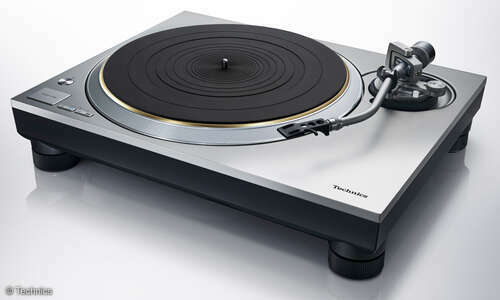mid M to side S og L OG R
Vinyl: How It Works (and What That Means for You) – Flypaper
Until very late in the 1950s, all records were
mono (one channel). On a mono record, the stylus tracks
lateral movement (side-to-side squiggles) only — the groove is a consistent depth. When record companies saw a market for two-channel
stereo recordings, the
vertical dimension of the groove (up-and-down hills and valleys) was right there for the taking!
But the most obvious solution — to use “lateral” as one channel and “vertical” as the other — presented at least two problems. For one, it would make stereo records incompatible with mono turntables (you’d only get one side instead of a summation of both). Another challenge: Large vertical excursions (hills) make for difficult tracking. The last thing we want is a ramp that launches the stylus right out of the groove!
Ultimately, a brilliant solution was conceived, albeit one requiring a bit of clever mathematics. With a little pencil-pushing, “left” (L) and “right” (R) channels can be rearranged as “mid” (M) and “side” (S).
“Mid” contains everything that’s the
same in both L and R, and “side” contains everything that’s
different between them. To encode into mid-side: (L+R)/2 = M and (L-R)/2 = S. To decode back into stereo, M+S = L and M-S = R. It might seem strange, but it works!
If the stereo signal is converted into mid/side for cutting, both aforementioned problems are solved. The “mid” channel moves in the lateral side-to-side dimension, resulting in perfect compatibility on a mono player. Remember: M = (L+R)/2. The “side” signal moves in the vertical dimension, and as long as bass frequencies are kept in-phase and close to the middle of the stereo field, there will be few large vertical excursions (read: “launch ramps”).















